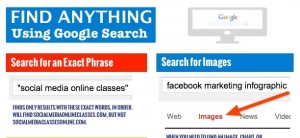Two thirds of employees don’t believe senior leadership supports recognition programs. Unsurprisingly, 83 percent report their organization’s culture doesn’t support recognition.
While many members of the C-suite have personally benefited from recognition, their priorities now are operational and financial. They are accountable primarily for the bottom line, sometimes to the detriment of indirect influences on the bottom line.
“Manage the top line, which is your strategy, your people and your products, and the bottom line will follow.” – Steve Jobs
In order to successfully launch employee engagement initiatives like recognition programs, it is important to gain active buy-in by speaking to impact on revenue and costs. The evidence here will help recognition champions address the most common skepticism in the C-suite.
Below are some of the most common misconceptions among senior leadership regarding recognition, and the hard data you’ll need to dispel those myths.
Employees want money, not praise.
Tens of thousands of employees disagree: 82 percent think it’s better to give someone praise than a gift.
Millennials want more than a paycheck, and a big part of that is frequent recognition and feedback. They are not alone: the more employees of any age are recognized, the more satisfied they are with their jobs – even the difference between weekly and daily recognition increases the number of satisfied employees from 85 to 94 percent.
A 2016 survey of over 1,000 employees showed 30 percent would rather be recognized in a company-wide email from an executive than receive a bonus of $ 500. In fact, within that 30 percent, over ¾ would only choose the bonus over recognition if it was $ 2,000 or more.
Quality of course matters a great deal. Empty praise and meaningless trinkets can do more damage than nothing at all. Modern recognition programs often empower employees to choose a gift that is meaningful to them personally, leaving the power of the appreciation to come from thoughtful words emphasizing the intrinsic value of their performance.
Values-based recognition programs are also more effective. Beyond acknowledging how employees exemplify corporate values, and signaling to others how that looks, rewards like days off and donations reinforce Employee Value Propositions (EVP) that include work-life balance, community, and social responsibility.
Appreciation has little financial benefit.
For skeptical executives, return on investment must be proven for immediate and long-term benefit to the organization.
Revenue
Willis Towers Watson reported that recognizing performance increases engagement by almost 60 percent. Likewise, Bersin by Deloitte found employee engagement, productivity, and performance are 14 percent higher in workplaces with recognition programs. And organizations at the 99th percentile of employee engagement have four times the success rate as those at the 1st.
Recognition satisfies the human needs of approval, esteem, and affiliation, which triggers the norm of reciprocity to give back to supportive employers. So, when employees perceive the organization values their contributions, they are less stressed; return to work sooner after injury; and, their performance improves: traffic patrol officers make more DUI arrests, and steel company staff make more creative suggestions for improving operations.
A 2017 study of nine organizations confirmed that increased recognition leads employees to predict desired outcomes and therefore invest more into in-role and extra-role work behaviors:
- Conscientiousness in performing job tasks
- Amelioration efforts to improve job tasks
- Collaboration to maximize group efficiency
- Personal initiative to improve group efficiency
- Involvement at the organizational level
Cost
Gallup found that only three in ten employees strongly agree they received recognition in the past seven days. Raising that to six in ten could reduce absenteeism by 27 percent; reduce shrinkage by 10 percent; and, raise quality by 24 percent.
Furthermore, employees who don’t feel recognized are twice as likely to quit within a year. Twenty-nine percent of departing employees cite recognition specifically as a key reason they quit. Turnover costs add up quickly: lost knowledge, lower productivity, overworked remaining staff, recruitment and training… it can cost you twice the salary of each employee who leaves.
Investment
HR usually administers recognition programs, while the budget can be department-specific, centralized, or both. Most organizations (42 percent of those surveyed by WorldatWork in 2015) budget 0.3 percent or less of payroll toward recognition. Bersin by Deloitte reported spending was closer to one percent in 2012.
While there are more intensive options, it doesn’t have to be cumbersome. How does $ 3/user/month sound for a ready-to-use platform that integrates with your current tools?
We already do recognition.
Your organization, like 89 percent of North American organizations, may have a recognition program already; However, only 24 percent of employees are satisfied with management’s recognition of job performance.
This may have something to do with the fact that years of service remains the most common recognition program, which alone is unlikely to impact employee engagement or retention. If these programs don’t improve business performance, it can lead to doubt in the value of all recognition.
In TINYpulse’s analysis of surveys from 1,000 organizations across the world, they found just 26 percent of employees felt strongly valued at work. Since infrequent and untimely recognition were the main obstacles, they recommend peer-to-peer recognition for job satisfaction and above-and-beyond performance.
Other unintentional barriers include: unclear criteria; limited capabilities to distribute rewards fairly; and, time-consuming forms and approvals process. Senior leaders assume employees are recognized more than annually, but 70 percent of employees report recognition once a year or not at all.
It is not enough to implement any recognition program – it also needs to align with the values and needs of the organization and its people.
Our business is different.
Research consistently proves the power of recognition in the workplace across countries, industries, and demographics. Still, there is nothing more convincing to the C-suite than hard data on exactly how recognition in their own organization leads to measurable profits.
For a comprehensive organizational dashboard, track at least one metric from each of Donald Kirkpatrick’s four levels of evaluation:
Reaction
Pulse surveys and focus groups can be strategically timed and targeted to show an association between employee perceptions of recognition and measures of employee engagement, especially as recognition efforts grow over time.
Learning
Survey employees to gauge their knowledge and beliefs align with the intended culture of recognition. Questions can include how important they find recognition, how to praise publicly, and which kind of recognition is ideal for different scenarios.
Behavior
Use recognition platform data to analyze who is giving and receiving recognition across time, location, team, and demographics. You can also compare how different corporate values are being recognized.
Results
The most direct goal of recognition is to increase incidence of the behavior being recognized. Ultimately, however, those behaviors and recognition culture overall are evaluated by the C-suite in terms of impact on the bottom line. So, look for results in your organization that mirror those in research:
- Improved performance, i.e. quality, innovation, safety, and customer satisfaction
- Increased productivity, i.e. work output, task turnaround, project deadlines, and sales
- Decreased costs, i.e. process improvements and reduced absenteeism
- Turnover statistics, exit interviews, and survey questions on intentions to leave
Quantify all relevant results in financial terms based on information as specific to your organization as possible.
In Conclusion
There are some key facts to take away to your next presentation to gain C-suite buy-in:
- 76 percent of employees are unsatisfied with recognition of job performance.
- Employees who don’t feel recognized are twice as likely to quit within a year.
- 82 percent of employees think it’s better to give someone praise than a gift.
- Recognition increases employee engagement between 14 and 60 percent.
- Employees who feel valued are more present, productive, and innovative.
- Administration and costs are not as cumbersome as you may think.
If you’re ready to take the next step toward building a recognition-rich organizational culture, check out our latest guide:
Business & Finance Articles on Business 2 Community
(93)






